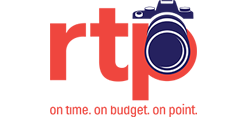Creating A Photography Shot List….
In addition to what is written below, having a phone call or even a face-to-face with the photographer can be very helpful in creating your shot list and preparing for the photoshoot.
A shot list is to provide guidance for the day of the photoshoot. Most photographers will expand upon the shot list provided. For example, we need a tight hand shot of someone holding XYZ. The photographer will likely not just shoot one shot and move on. The photographer will most likely shoot multiple angles and some shots tighter than others to give some variety of the shot which allows the client to have options on selecting the image that may work best.
It can also be very helpful to share examples of shots your like that you have found online. The photographer can see the style you are going for and how the lighting is being used. These could be copied and put in a PDF or direct links sent to the photographer: David@rtpphotoandvideo.com
A shot list can be broken down into “Must Haves – Priority Shots” and “Good to Have – Secondary Shots” and “Extras – If time permits, let’s get these shots.”
So break the list down in priority order:
Must Haves – Tight shot of John at his computer
Good to Have – Wider shot of John and Jane working at white board
Extra – John shaking hands in the lobby with Bill
When creating the shot list, try to give a few details but not in long paragraph form. Something as short as the above can work, but you do want to consider the people,
product and environment the shot will be taken in. You’ll also want to consider Close Up or Wide Shot and Posed or Candid Shot. Some posed shots can look more like Candids if
that’s the goal.
Make a list of all the people needed for the photoshoot as well as the products and any props along with the locations the shot will be taken:
…John, Bill, Jane and Brenda
…ABC Product, XYZ Product
…Clip Board, Lab Coat, Pen
…Inside the Lab, the classroom, the main lobby
Again, you don’t have to type long paragraphs for a shot list. One sentence or even bullet points can work:
…Close Up of John with ABC Product holding a clipboard inside the lab
…Jane inside the lab wearing lab coat holding XYZ Product
A shot list is not a end all. It does provide guidance and by prioritizing makes sure the “Must Have” shots don’t get left out.
Creating A Video Shot List…
Having a phone call or face-to-face with our Video Production Manager, Brittany, will be necessary. It will make a huge difference in creating a video shot list and discussing the end goal of the video(s). Also, sending video examples will be very helpful as well. At minimum, sharing one video you like is really a must as part of the video production process. Email to Brittany@rtpphotoandvideo.com
Here’s and example of what it looks like to prepare for a video shoot:
– Scene details: Location, Interior/Exterior, Time of Day
– Shot number: When multiple shots are used to capture the same scene
– Shot description: Anything from an insert description, to an action in the scene, to a line of dialogue, etc.
– Framing: Defines the size of the subject in the frame. (i.e. closeup, medium shot, wide shot, etc.)
– Camera: For a multi-camera shoot, identify individual cameras, or specialty cameras (i.e. drone, GoPro, security camera, webcam, etc.) needed for the scene.
– Camera Angle: The position of the camera in relation to the subject (i.e. eye-level, high angle, low angle)
– Camera movement: Identifies any movement of the camera during the shot. (i.e. Static, pan, tilt, dolly, etc.)
– Actors/Actresses: This can be one person, a group of people, establishing shot, etc.
– Props needed in the scene
– Extra notes
As you can see above, a video shot list works much the same way as a photo shot list but goes even deeper. AUDIO ( person on screen or voice over ) is often needed in video and “B” roll shots ( no audio ) for filling necessary parts of the video. We also need to know if this will be scripted with a teleprompter ( preferred and recommended ) or off the cuff ( will likely slow things down ).
For example, John will be on camera reading a script about the lab from the teleprompter. We need “B” roll shots showing people working in the lab and we definitely need to get XYZ product in the scene in a tight shot.




